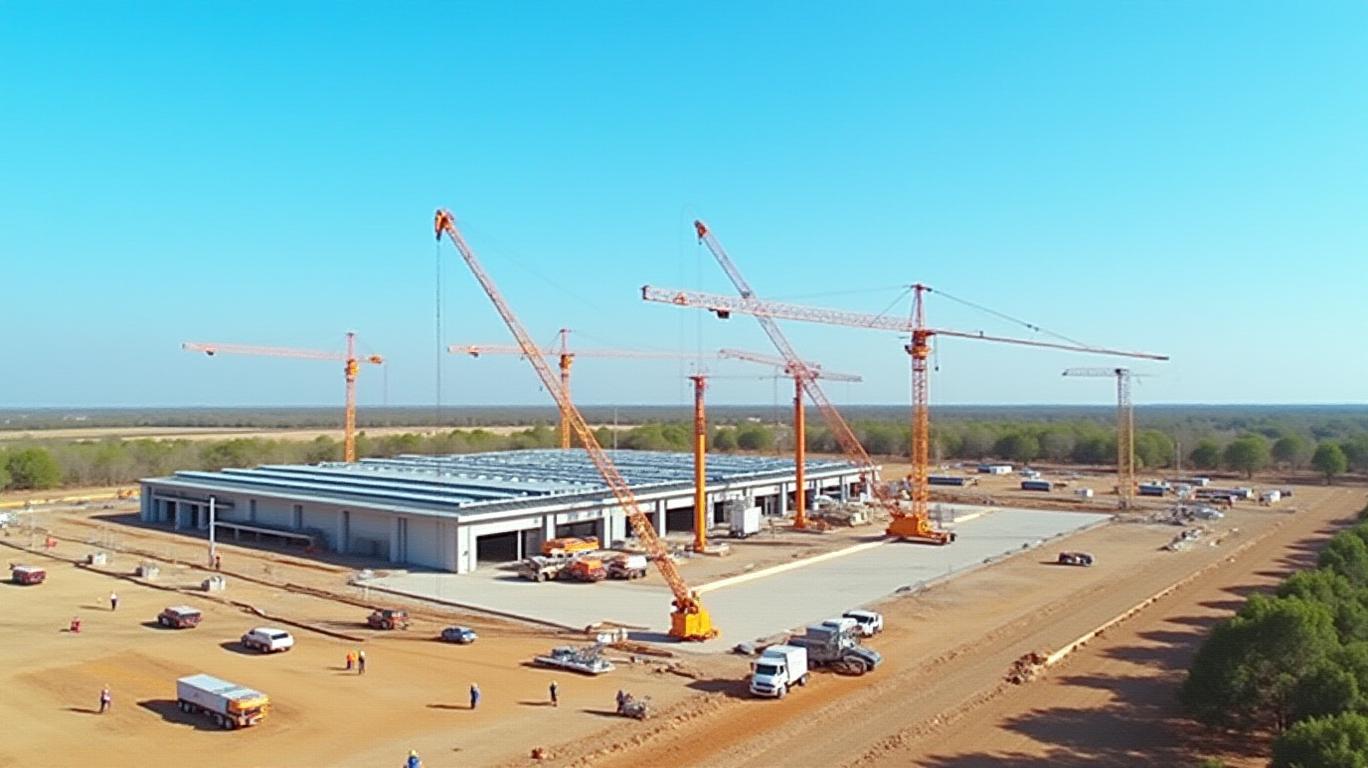GlobalWafers’ $7.5B U.S. Expansion: The linchpin of semiconductor localization and tech sovereignty
The global semiconductor industry is undergoing a seismic shift as geopolitical tensions, supply chain fragility, and AI-driven demand for advanced chips force nations to insulate critical manufacturing. At the epicenter of this transformation stands GlobalWafers, a Taiwanese wafer giant whose $7.5 billion U.S. expansion is not merely an investment—it is a strategic maneuver to redefine the rules of the $600 billion semiconductor market. By anchoring silicon wafer production in Texas and Missouri, GlobalWafers is positioning itself as the unsung backbone of the U.S. semiconductor renaissance, directly enabling TSMC’s $65 billion Arizona chip plants and broader CHIPS Act ambitions. For investors, this is a rare opportunity to profit from the decoupling of global chip production from Asia-centric risks—and the birth of a U.S.-centric supply chain.
The Geopolitical Imperative: Why Localization is Non-Negotiable

The U.S. semiconductor sector is at a crossroads. Over 90% of 12-inch silicon wafers—the foundational material for all advanced chips—are produced in Asia, primarily Taiwan and Japan. This reliance has exposed vulnerabilities: the 2011 Tōhoku earthquake caused a 12% global chip shortage, while geopolitical tensions over Taiwan’s status threaten to destabilize 60% of global chip production. The CHIPS Act, a $52.7 billion federal initiative, seeks to end this precarious dependency by incentivizing domestic manufacturing.
GlobalWafers’ $7.5B plan—funded in part by a $406M CHIPS Act subsidy—is a direct response. Its Sherman, Texas plant (beginning production in 2026) will be the first high-volume 300mm silicon wafer facility in the U.S. in 22 years, supplying TSMC’s Arizona fabs with critical inputs. Meanwhile, its Missouri facility will produce silicon-on-insulator (SOI) wafers for defense systems, reducing reliance on European competitors like Soitec.
This isn’t just about chips—it’s about sovereignty. As China’s semiconductor ambitions grow (it now holds 31.4% of global market share), the U.S. must control its supply chain from wafer to final product. GlobalWafers is the first link in that chain.
Supply Chain Resilience: A $7.5B Insurance Policy Against Asia’s Risks
The company’s dual-site strategy addresses two existential threats: geographic concentration and logistical fragility.
- Silicon Wafers: The New Strategic Resource
- 90% of 12-inch wafers are made in Asia, but GlobalWafers aims to capture 15-20% of U.S. demand by 2030.
TSMC’s Arizona plants, which produce 3nm and 4nm chips for AI, automotive, and defense, will rely on these wafers. Without U.S.-made silicon, TSMC’s expansion is a house built on imported sand.
Decentralized Production for Stability
- The Texas plant’s 1.2 million monthly wafer capacity reduces reliance on Asian suppliers, shielding U.S. chipmakers from typhoons, trade wars, and supply bottlenecks.
- SiC wafers (for EVs) and SOI wafers (for radar systems) further insulate defense and clean energy sectors from Asia’s dominance.
AI and Chip Demand: The Fuel for GlobalWafers’ Growth
The semiconductor industry’s next boom is already underway. AI workloads, autonomous vehicles, and high-performance computing are driving 12% annual growth in advanced chip demand through 2030. GlobalWafers’ expansion is timed perfectly:
- TSMC’s $65B Arizona complex, supported by GlobalWafers’ wafers, will produce chips for AI GPUs, autonomous vehicles, and next-gen 5G infrastructure.
- Demand for SOI wafers (used in radar systems for autonomous vehicles) is projected to grow at 18% CAGR, directly benefiting GlobalWafers’ Missouri facility.
Why Investors Must Act Now
This is a decoupling play—a bet that the U.S. will succeed in its “onshoring” mission. GlobalWafers’ moat is structural:
- CHIPS Act subsidies provide a 25% cost advantage over Asian competitors.
- First-mover advantage: It’s the only U.S. manufacturer of 300mm silicon wafers.
- Strategic partnerships: Ties to TSMC, Samsung, and U.S. defense contractors lock in demand.
Risks and the Path Forward
- Geopolitical headwinds: Escalation of U.S.-China tensions could delay approvals or funding.
- Execution risk: The Texas plant’s 2026 startup hinges on labor and material shortages.
But the tailwinds are stronger. The U.S. government has already committed $30.1B to CHIPS Act projects, with GlobalWafers’ facilities guaranteed funding until milestones are met. Meanwhile, AI’s insatiable appetite for chips ensures demand will outstrip supply for years.
Conclusion: Buy GlobalWafers for the Decade of Localization
GlobalWafers isn’t just a wafer maker—it’s the unsung hero of U.S. tech sovereignty. Its $7.5B bet on domestic production is a linchpin for TSMC’s U.S. ecosystem, the CHIPS Act’s success, and the decoupling of critical supply chains from Asia. With geopolitical risks mounting and AI demand surging, this is a once-in-a-generation investment: a play on resilience, growth, and the reordering of global technology power.
The time to act is now. The next decade belongs to those who localize first.

Comments
No comments yet